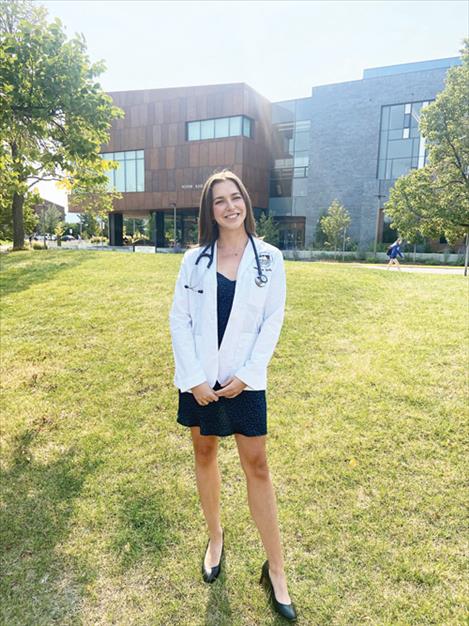WWAMI student focuses on local substance use disorder
Hey savvy news reader! Thanks for choosing local.
You are now reading
1 of 3 free articles.
LAKE COUNTY — A medical student from Whitefish is working on a proposal that may help those grappling with substance use disorder in Lake County.
A second year WWAMI medical student - a cooperative medical program with the University of Washington School of Medicine that includes Washington, Wyoming, Alaska, Montana, and Idaho - Marlow Schulz was given the opportunity to get some immersive clinical experience early in her academic journey at St. Luke’s with the Rural Underserved Opportunities Pathway (RUOP).
A month-long clinical immersion experience in the summer between medical students’ first and second years of school, the idea of RUOP is to give students experience both within a clinic and community alike. This provides the opportunity to see what some of the common health problems are in an area and consider how they might best be addressed from a healthcare point of view.
“I kind of went into my RUOP in Ronan and Polson with an interest in addiction medicine, and one of the first things they have us do when we get there is look at the health needs assessments … A big one is substance use disorder, both opioid use and alcohol use,” Schulz explained. “Behavioral health is hard to access, substance use treatment is hard to access, so an interest for me was how we could theoretically break down barriers and make it easier to access this kind of care for people who are struggling.”
While medical students only visit for four weeks, which Schulz said is not nearly enough time to fully understand how a problem exists in a community, it does allow them to start compiling a theoretical intervention that would address the problem.
The model Schulz is compiling for the area is based off an existing program – the Montana Obstetrics and Maternal Support (MOMS) empath program, which deals specifically with pregnant women dealing with opioid use disorder. A coordinated care model, people screened and identified with substance use disorder are enrolled in the program in which that person’s case manager, physician, and behavioral health professionals all communicate. This provides a cohesive and more seamless experience for the patient to make it easier for them to follow through on their treatment. This can also lead to more telemedicine accessibility.
“A big issue for these populations is patients who are just starting out on medicated assisted therapy are supposed to come into the clinic weekly for a urine drug screen and a quick visit with the provider, and that’s in addition to weekly behavioral health and getting to the pharmacy to pick up your prescription every week,” Schulz said. “It’s a huge barrier for people who are often working and have families and lives ... So the thought that moving more of that to a telehealth option and approach would hopefully make it more accessible and a little bit easier.”
During her clinical experience with her preceptor, Dr. Megan Vigil in Ronan, Schulz’s perspective was that the coordination of substance use disorder has primarily fallen on primary care providers and their teams, taking up a lot of their time and resources to try and keep people checked up on and in the system. With the success she saw in the MOMS program, Schulz thinks there’s potential to use its framework on a far broader population than just expecting mothers.
Schulz will return to St. Luke’s in the spring for her clerkship, and hopes to begin setting up meetings with those in charge to discuss the potential for her theoretical program.
“It’s really cool for someone early in their training like I am to have these clinical opportunities and opportunities to get to know a community,” Schulz said. “I’m just grateful for the early exposure and getting to know the community and its providers, and I hope to be back to practice.”
















